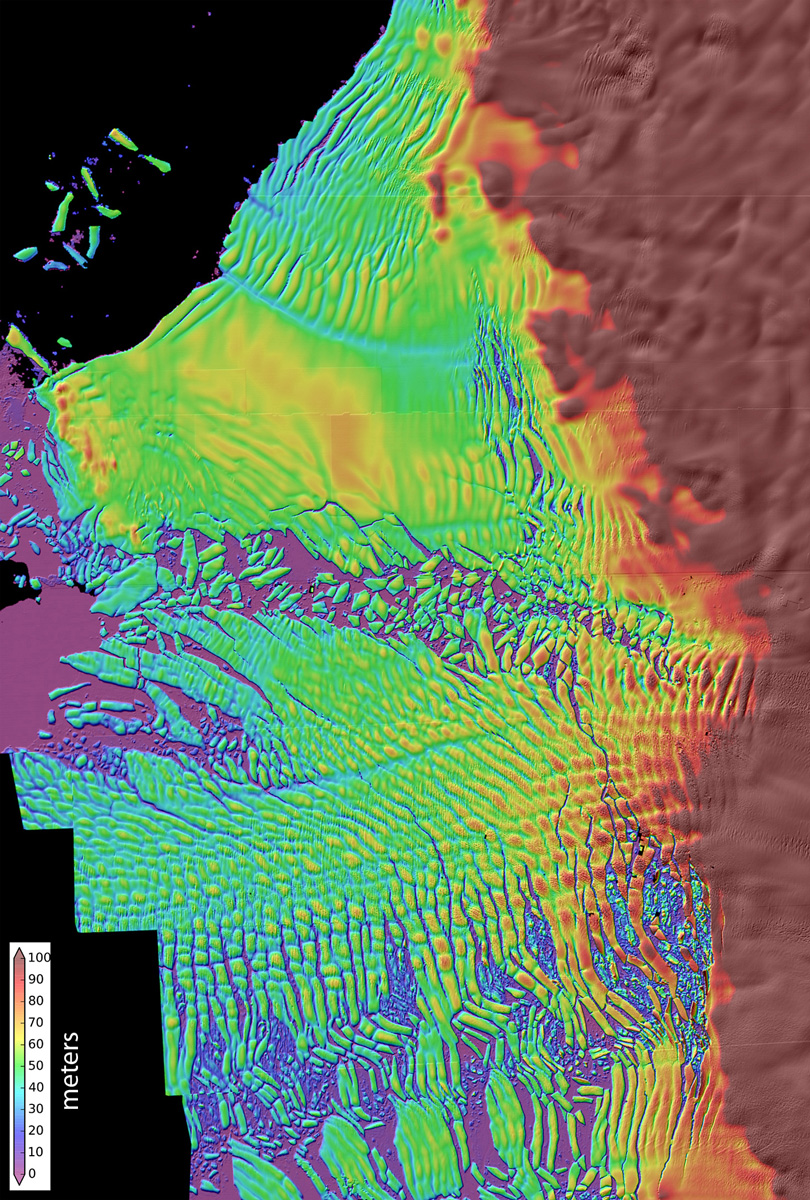West Antarctic Ice Sheet collapse is underway
May 13, 2014

A high-resolution map of the Thwaites Glacier’s thinning ice shelf. The glacier now appears to be in the early stages of collapse, with full collapse potentially occurring within a few centuries. (Credit: David Shean / University of Washington)
Antarctica’s fast-moving Thwaites Glacier will likely disappear in a matter of centuries, potentially raising sea level by more than a half-a-meter (two feet), National Science Foundation-funded researchers at the University of Washington have concluded
Data gathered by NSF-funded airborne radar, detailed topography maps, and computer modeling were used to make the determination.
The glacier acts as an ice dam, stabilizing and regulating movement toward the sea of the massive West Antarctic Ice Sheet. The ice sheet contains enough ice to cause another 3 to 4 meters (10 to 13 feet) of global sea level rise.
The fastest scenario based on the data, the researchers said, is 200 years, and the longest is more than 1,000 years.
The findings are published in the May 16 edition of the journal Science.
The place where the glacier meets land, the grounding line, now sits on a shallow ridge at a depth of about 600 meters (2,000 feet) below sea level. Results show that as the ice edge retreats into the deeper part of the bay, the ice face will become steeper and, like a towering pile of sand, the fluid glacier will become less stable and collapse out toward the sea.
The study considered future scenarios using faster or slower melt rates depending on the amount of future warming. The fastest melt rate led to the early stages lasting 200 years, after which the rapid-stage collapse began. The slowest melt rate kept most of the ice for more than a millennium before the onset of rapid collapse. The most likely scenarios may be between 200 and 500 years, Joughin said.
Researchers did not model the more chaotic rapid collapse, but the remaining ice is expected to disappear within a few decades.
Abstract of Science paper
Resting atop a deep marine basin, the West Antarctic Ice Sheet has long been considered prone to instability. Using a numerical model, we investigate the sensitivity of Thwaites Glacier to ocean melt and whether unstable retreat is already underway. Our model reproduces observed losses when forced with ocean melt comparable to estimates. Simulated losses are moderate (<0.25 mm per year sea level) over the 21st Century, but generally increase thereafter. Except possibly for the lowest-melt scenario, the simulations indicate early-stage collapse has begun. Less certain is the timescale, with onset of rapid (> 1 mm per year of sea-level rise) collapse for the different simulations within the range of two to nine centuries.